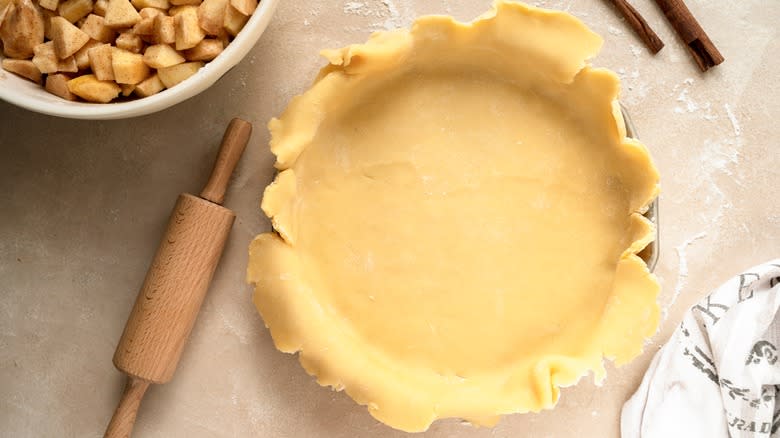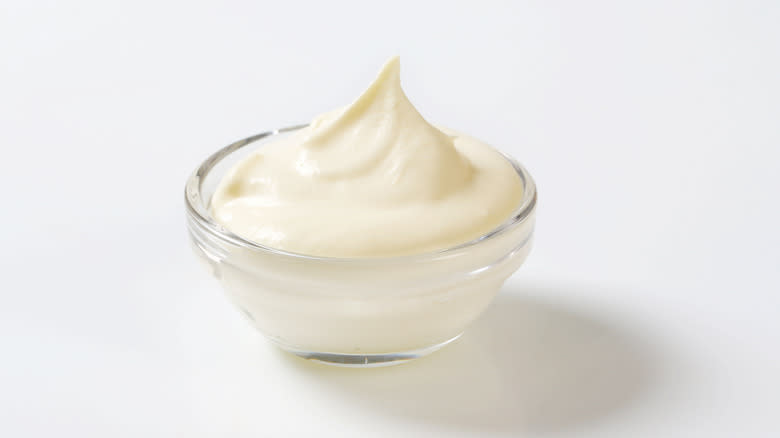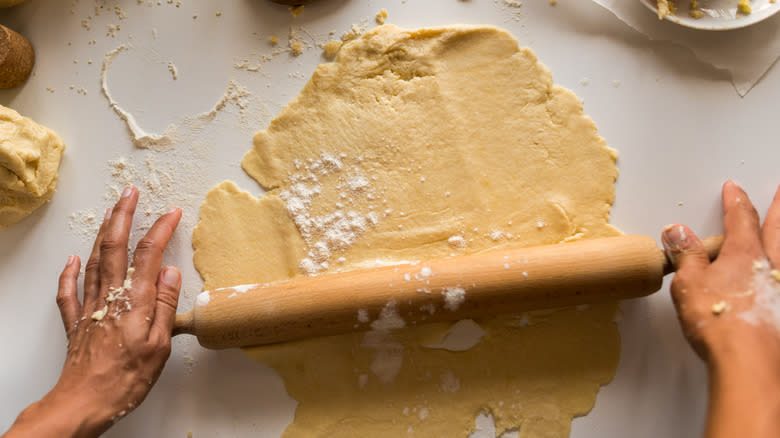The Secret Ingredient For A Tender, Buttery Pie Crust

There's something about pie crust that makes inexperienced bakers balk — perhaps that's why pre-made crusts from the grocery store are so popular. Pie crust isn't a terribly difficult recipe to follow, however. Every recipe is essentially flour mixed with fat and then brought together with a little bit of water; it's the technique of handling the dough and rolling out the crust that usually fouls people up. When you second guess yourself or don't have a lot of practice rolling out a perfect circle for a pie shell, you can end up overworking the dough and developing gluten, which will make it tough. But if you make your crust with a little bit of sour cream instead of cold water, your dough will be able to handle a little more folding and rolling and still come out tender and flaky every time.
The secret to using sour cream instead of water to make pie crust comes down to the gluten — in short, you don't want very much of it. When you use sour cream instead of water, thanks to a little cooking science, you won't develop as much gluten even when you work the dough, which will give you more flexibility to play around with the rolling pin and get the crust from the counter to the pie pan in one piece.
Read more: Cake Hacks Every Baker Will Wish They Knew Sooner
Fat Prevents Too Much Gluten Development In Your Dough

If you want to make a tender, flaky pie crust, the most important thing you need to know is how gluten works. Gluten is a sticky protein that's formed when wheat flour is exposed to water and then mixed. It also takes some manhandling to develop gluten, which is why bread and pizza dough are kneaded. These baked goods need all that gluten to trap steam inside the crust of the bread or pizza dough so that it will puff up. In a pie crust, however, you don't need any rising. In fact, you don't want much gluten to form at all — just enough to keep the dough together when you roll it out.
In most standard pie crust recipes, you mix the butter or shortening and flour together until it starts to look like wet sand and sticks together if you give it a pinch. When it gets to that point, normally, you would add water to make it sticky enough to roll out on a flat surface. As soon as you add water to that mixture, you'll start to develop gluten each time you push, pull, or roll the dough. With full-fat sour cream, however, the liquid in the sour cream is surrounded by fat, so it won't interact as much with the molecules that make gluten.
Sour Cream Makes Pie Crust Easy

If you want to experiment with using sour cream, you can alter an existing pie crust recipe fairly easily. Sour cream can't be substituted exactly 1-for-1 for water in a regular pie crust recipe, but you only need about a quarter of a cup for a single crust. Add the cream like you would cold water — after you've mixed all the butter or shortening with the flour.
Since your sour cream dough won't develop as much gluten, you're free to do whatever you have to do to get a circular piece of dough that will fit into a pie plate. This is great for newbies and inexperienced bakers because you don't have to worry that your crust is going to get tough if you have to do a little extra rolling to fill in cracks and gaps. Just be sure to always use full-fat sour cream; fat-free or low-fat versions are just low-fat milk mixed with thickener, and they won't work the same way. If you can get European sour cream, which has a higher fat content, even better.
Sour cream pie crust is just as useful for experienced bakers, too, because dough made with sour cream is easy to work with, won't get too sticky, and comes out fairly foolproof — and even the experts can appreciate a tasty shortcut like that.
Read the original article on Daily Meal.

